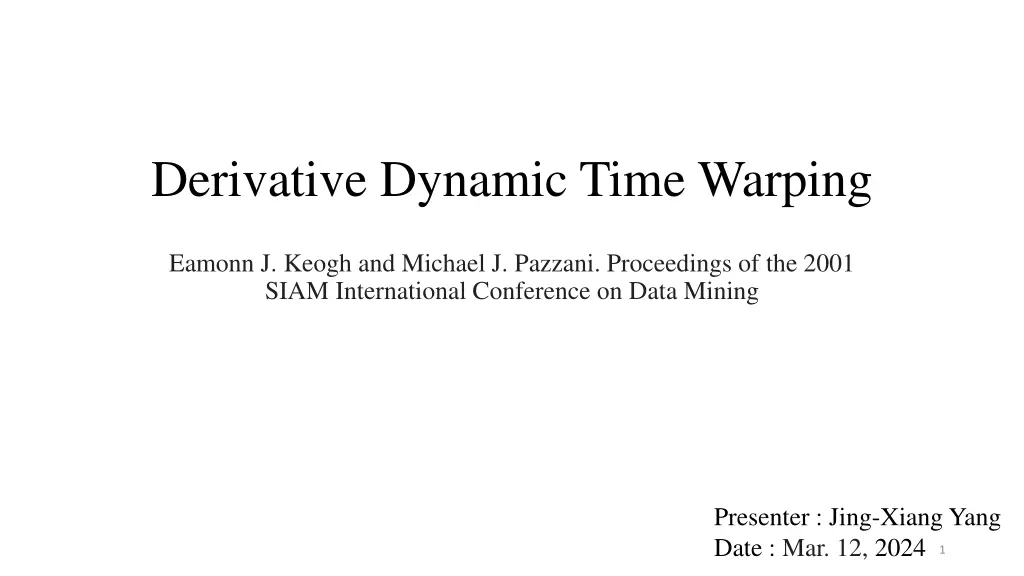
Innovative Approach to Dynamic Time Warping for Time Series Alignment
Explore a modification of Dynamic Time Warping (DTW) focusing on local derivatives to improve alignment accuracy and address singularities. Discover the impact on various fields like data mining, gesture recognition, and medicine.
Download Presentation

Please find below an Image/Link to download the presentation.
The content on the website is provided AS IS for your information and personal use only. It may not be sold, licensed, or shared on other websites without obtaining consent from the author. If you encounter any issues during the download, it is possible that the publisher has removed the file from their server.
You are allowed to download the files provided on this website for personal or commercial use, subject to the condition that they are used lawfully. All files are the property of their respective owners.
The content on the website is provided AS IS for your information and personal use only. It may not be sold, licensed, or shared on other websites without obtaining consent from the author.
E N D
Presentation Transcript
Derivative Dynamic Time Warping Eamonn J. Keogh and Michael J. Pazzani. Proceedings of the 2001 SIAM International Conference on Data Mining Presenter : Jing-Xiang Yang Date : Mar. 12, 2024 1
ABSTRACT Dynamic time warping (DTW) is a technique for aligning time series data, crucial for comparing or averaging sequences with different time axes. It's widely used across various fields including data mining, gesture recognition, robotics, speech processing, manufacturing, and medicine. Despite its success, DTW can yield problematic results due to "singularities," where it excessively warps the time axis to explain Y-axis variability. Existing solutions often constrain warpings, potentially missing the correct alignment. Additionally, DTW may fail to find natural alignments due to slight variations in feature heights. In this paper we address both these problems by introducing a modification of DTW. The crucial difference is in the features we consider when attempting to find the correct warping. Rather than use the raw data, we consider only the (estimated) local derivatives of the data 2
Singularities It only considers a datapoints Y-axis value. 4
Y p q X 5
DDTW Considers the higher level feature of shape Obtain information about shape by considering the first derivative qiqi+1 qi-1 6
Experiment Spurious warping 7
Experiment Spurious warping K : warping path length m : sequence length 8
Experiment Correct warping 9
Experiment correct warping 10
Thanks 11
